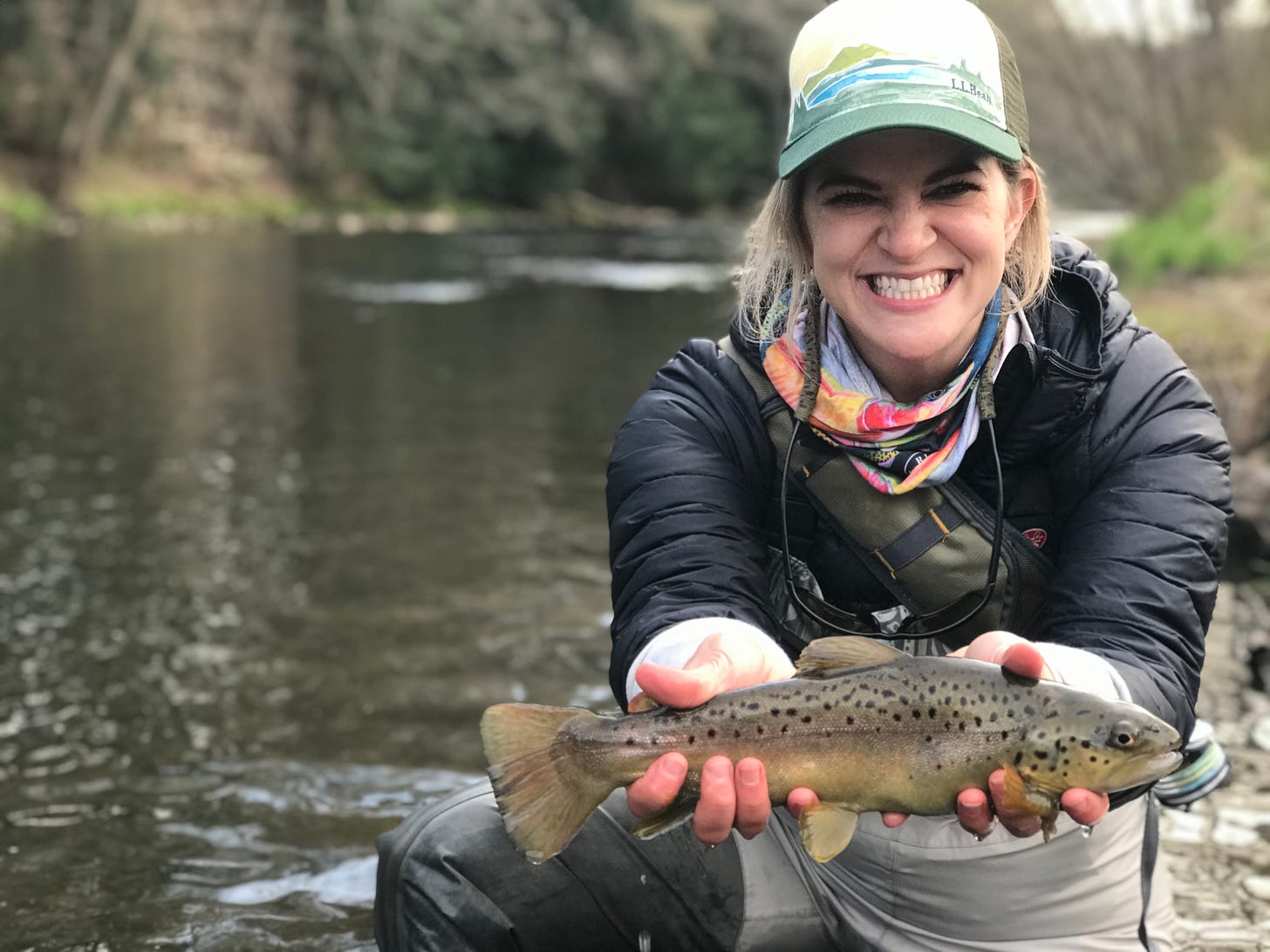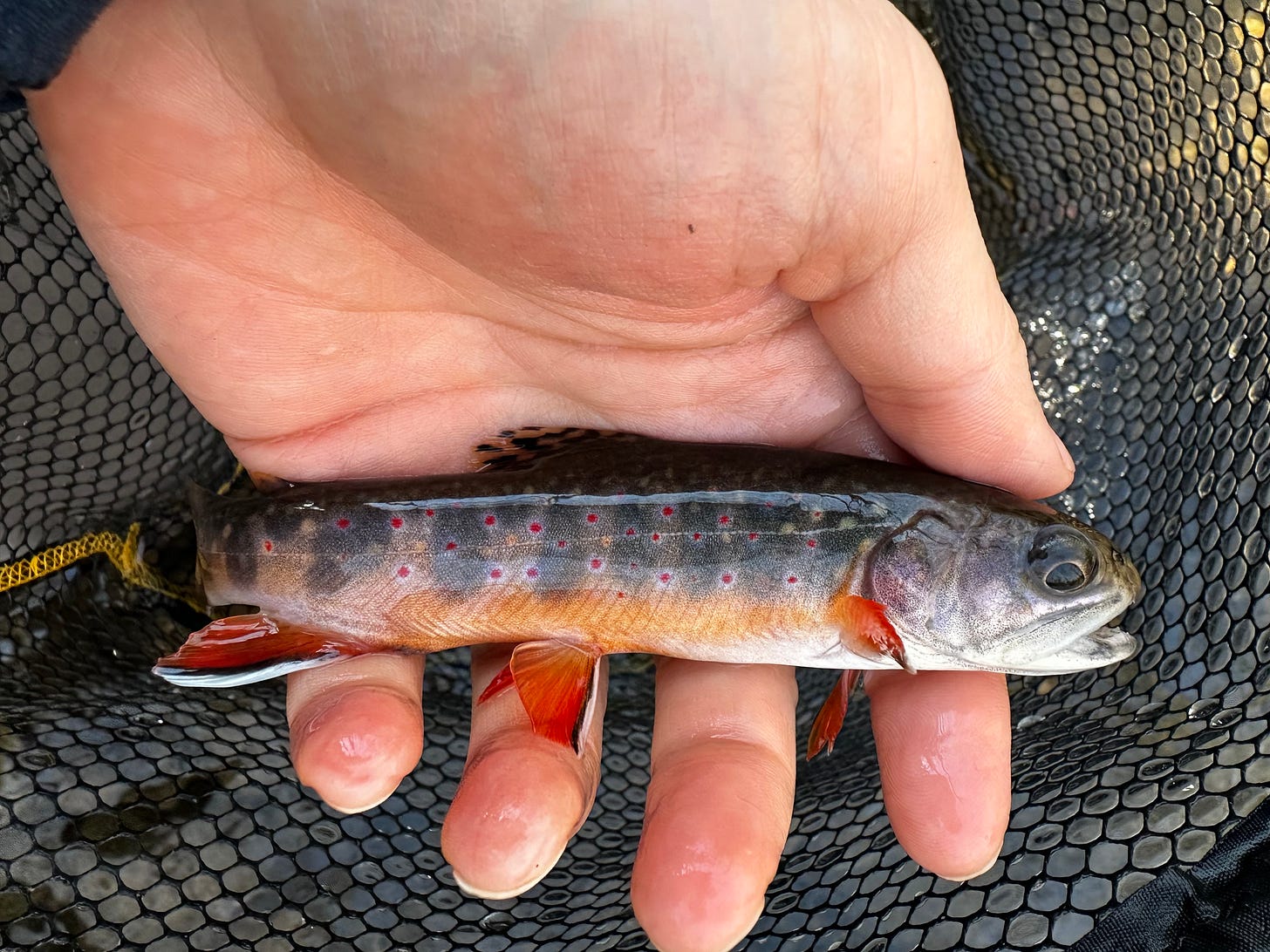Sunday Soak: Break the Dams
This one might be the best one yet. Seeing the true life we have in Christ to free us from bondage in this life.
Hello friends! My goodness, that last two Soaks were maybe more like drownings, so let’s see if we can abbreviate it a little more today. (My word count says it is shorter, but I did add more pics…)
When the dams along the Boardman River were decommissioned as power sources, because they could only power about 10,000 incandescent light bulbs each, stakeholders spent several years figuring out what to do with them. They were in decay, nature was slowly reclaiming its territory, and the recreation on the impoundments was not significant enough to offset the cost of maintaining dead dams. It was decided that three would be removed, and one would be significantly altered to bring the river back to life.
The project began with slowly letting the water out of the impoundments above the three upper dams.1 Then the sediment that had built up was excavated and relocated to build up the area above the banks and locate the historical riverbed. The remaining parts of the dam were removed, and then the project to restore the native plant life throughout the river valley got underway. Today, just five years after the final dam was removed, the scene is incredible.
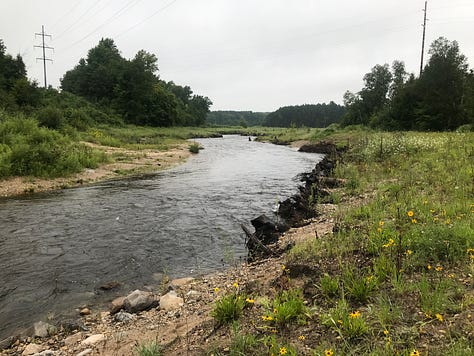
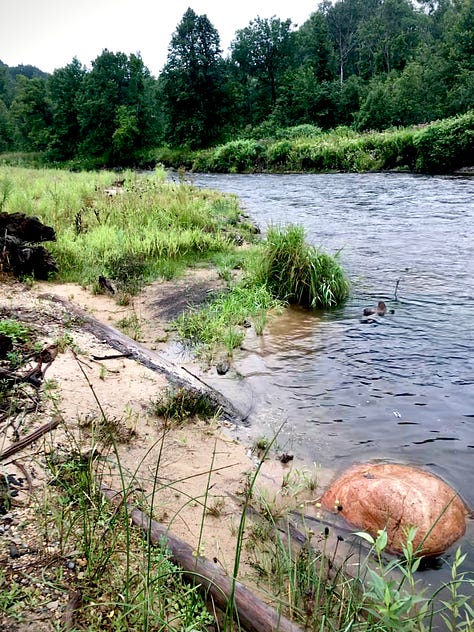
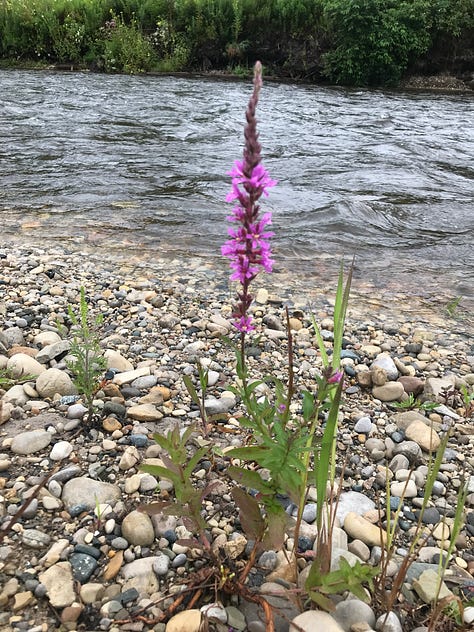
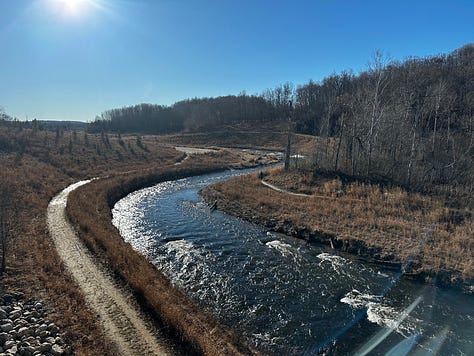
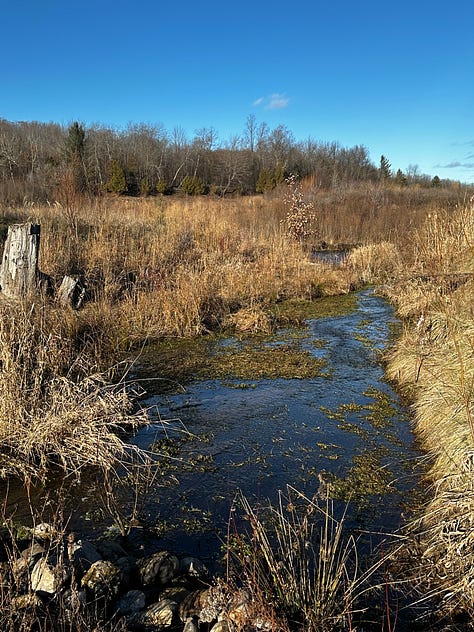
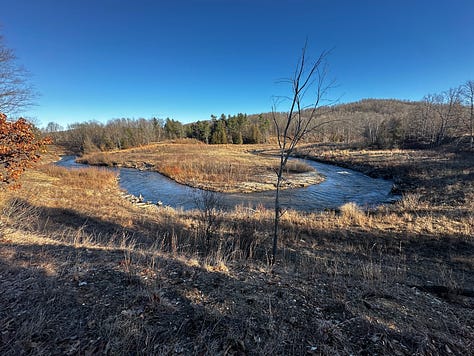
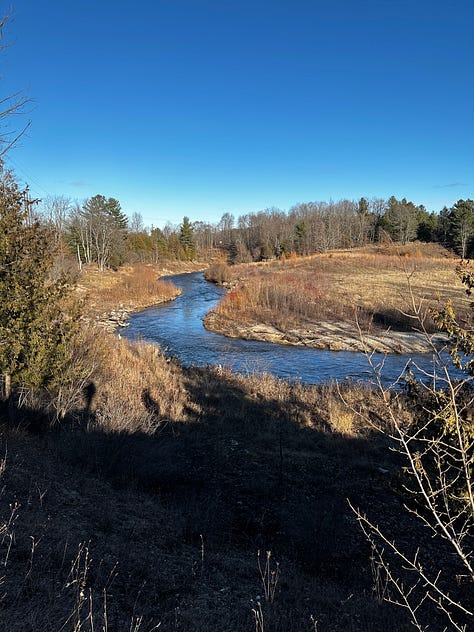
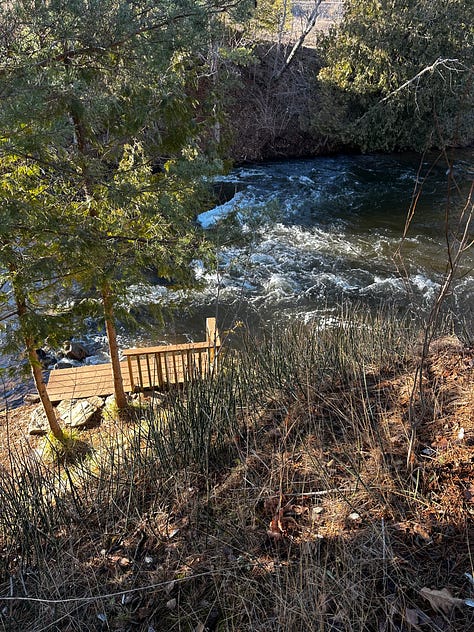
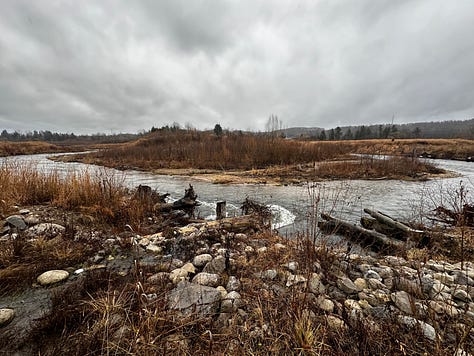
In the Beginning, we were made by God in His Image (Genesis 1:27), and we were made for Him (Colossians 1:16). He made us to be His companions, His children, and His friends. Though He did not need any of these, it was His good pleasure to do so. We were made to be in a perfect, sinless relationship with Him.
He planted a garden, and He placed Adam there. A river in the garden split to form four other important rivers. Adam was given a tremendous amount of authority over the earth, and Eve was given to him as a helper. There was only one rule, but otherwise the couple was given the task of multiplying themselves and looking after the earth.
They were naked before God and each other, they knew no shame, and they knew no difference between good and evil, because they knew only good. They knew nothing of burdens, nor pain in child labor, nor toiling to no end. Most of all, they gave no thought to death, because death had not yet entered the picture. Therefore, they lived without fear or concern. They lived with the view that life was eternal and that paradise was ever before them. We were made to live and look at life this way.
As I imagine it, Adam and Eve enjoyed all the delight of a never ending summer. Their work produced a harvest 100% of the time, they enjoyed their weekly rest with the Lord, and they enjoyed leisure without ever looking at the clock to wonder when the more dreadful aspects of life might creep back in. There were no “Sunday scaries” in Eden. The only threat was a seed of doubt, sown by a deceitful serpent.
Then came the fall.
Then came our urge to build up around our hearts and lives our own protective barriers, power houses, irrigation systems, storage impoundments, and versions of what it meant to live a full life.
We dammed the river out of utility because we do not produce a harvest every time, and famines and droughts have come. We dammed the river out of fear, because suffering threatens us with heartache, death, and hardship. We dammed the river out of greed, because we know what scarcity is now. We dammed the river out of sin, because we believe it offers us more than God.
We dammed the river because we didn’t know it would be better to let it flow freely, because we didn’t believe that God still looked at us and called us tov me’od, or abundantly good (Genesis 1:31).
”For My people have committed two evils: They have forsaken Me, the fountain of living waters, And hewn themselves cisterns—broken cisterns that can hold no water.“ (Jeremiah 2:13)
When I first envisioned this week, I thought about some series of steps to align with the removal of a physical dam to un-dam our own hearts. And honestly, you can go that route. You can pray, worship, dwell in the Word, make a choice to practice daily acts of obedience, relocate the excess built-up in your life, and confess all your sins to God. Those are all good things and part of a disciplined, Christian life. But my worry is that we will get so caught up in the dam removal that these will just become routines or motions that we go through, and we’ll end up relying on our own strength to remove them and caught in the temptation to negotiate another way.
See, when a river has a dam problem, people go about solving them in many ways. They may try to prevent or remove the sediment build-up, but this is very time-consuming and expensive. They may develop stocking programs or even fish ladders to allow fish to live and breed above the dam, but that doesn’t solve the problem that impoundment water is significantly warmer than the cold water enjoyed by fish like salmon, trout, and sculpin. They may try to upgrade the dams to meet new codes, but these can only be temporary, as water is a fearsome force that will once again render it a damned dam.
Since the Boardman dams were no longer useful for power, and sediment wasn’t necessarily their biggest concern, the major question at play was whether or not to preserve the impoundments by upgrading the decaying dams. The dams would break at some point if not addressed. The Keystone Dam had already been overtaken by a flood in 1961. Nature was in the process of reclaiming the rest, and the city was faced to decide if they were worth it to maintain or not.
They could have spent the money to upgrade the dams, but removal became the ultimate solution due to one key factor: People began to remember the river that was and to envision the river reborn to its natural state.
That is, while it was still dammed, they saw it as a free-flowing life form, alive and gurgling, teeming with fish and other aquatic species, a haven for a wild ecosystem and full of wildlife.
Prior to becoming a logging artery and then a power source, the Boardman River was the “Ottaway”, an Ojibwe word meaning “River of Trade”. The Anishinabe people had lived on it and used it for sustenance and livelihood for centuries, a history of which they passed down to the current generation of indigenous Northern Michiganders. To them, the river was very much alive, but blocked from living the life of freedom for which it was created. They became an important voice as the city grappled with what to do with the dams.
Another group of people emerged in the discussions as well - the conservationists who recognized that the Boardman had the qualities of a world class trout stream and fishery, and though hindered by the dams, could be restored if allowed to flow freely. These people did not grow up with the lore of the storied Ottaway, but rather saw the river come back to life because they saw what it could be. They knew the superior beauty and fight of a wild fish over a stocked one, and the feeling of pure, cold, healthy water on their skin when sediment is allowed to travel downstream to nourish the ecosystem. They knew what it was for a stream to be wild and free.
And so we have this important picture of the resurrection of a dead river: seeing the freedom it was made for and believing it could return to that glorious vitality again.
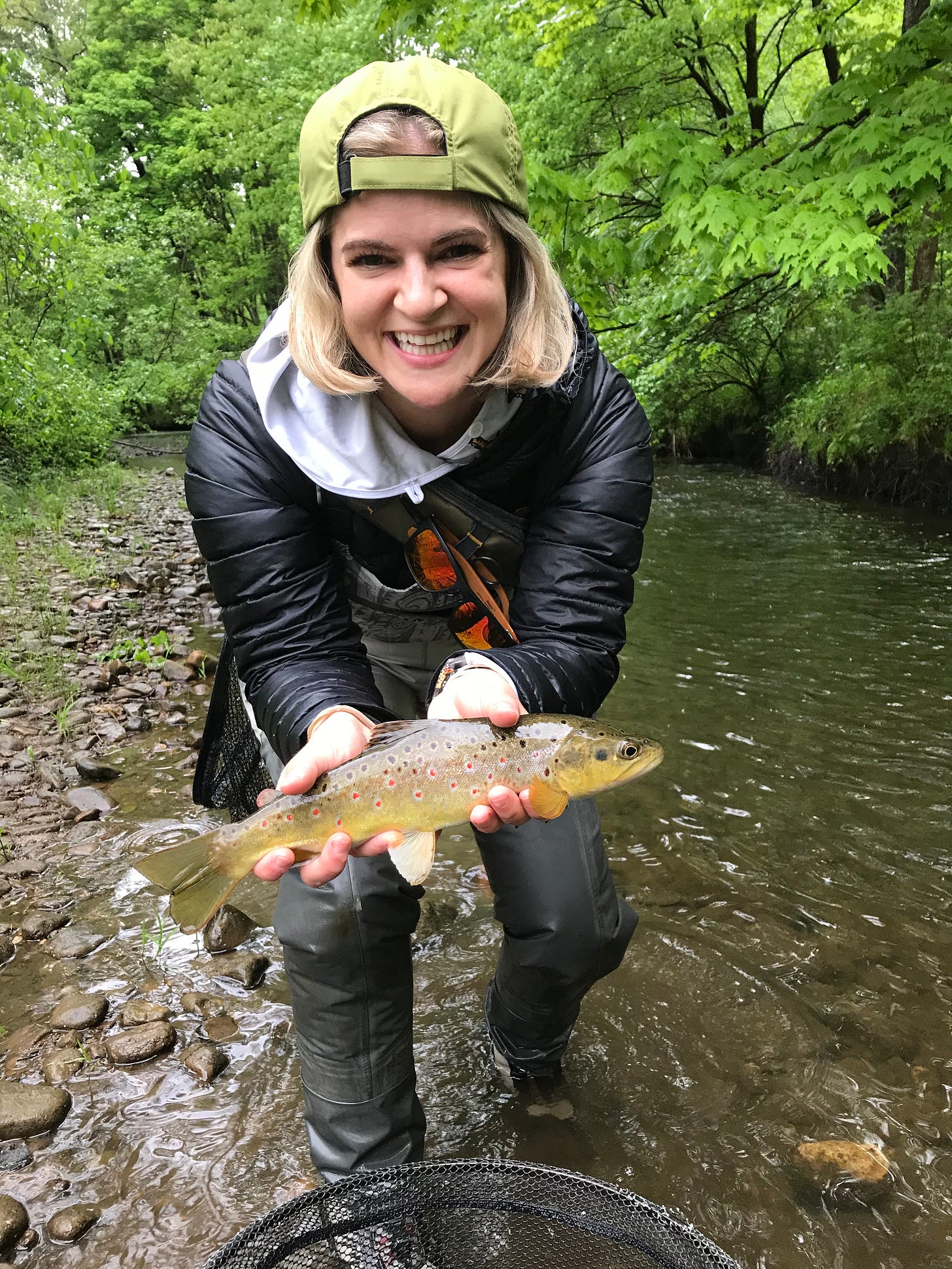
“There is a river whose streams make glad the city of God, the holy place where the Most High dwells.” (Psalm 46:4)
“With joy you will draw water from the wells of salvation.” (Isaiah 12:3)
After the fall of man, the Bible continues to reference rivers as a spiritual picture of eternal life. Water from a rock (Exodus 17:1–7 and Numbers 20:1–14) and streams in a desert (Isaiah 35:6) specifically point us to the absolute impossibility that we could provide eternal life for ourselves and the absolute truth that God had made a way where there is no way. The New Testament specifically emphasizes that salvation in Christ produces eternal life - Jesus is the water from the rock and the streams in the desert.
As He spoke with the Samaritan woman at the well, Jesus said to her, “Everyone who drinks this water will be thirsty again, but whoever drinks the water I give them will never thirst. Indeed, the water I give them will become in them a spring of water welling up to eternal life.” (John 4:13-14)
This word “life” is repeated in Johannine literature more than other other New Testament writer.2 Each time, he uses the Greek “zoë”. We know this word from December. Zoë refers to the absolute fullness of life that belongs to God, which He imprinted on human nature from the very beginning of Creation, and it refers to the life of those who put their faith in Jesus Christ for salvation - real and genuine, active and vigorous, devout and blessed - both here in this lifetime and for eternity.
Zoë used 43 times in the Gospel of John alone. Here is a sampling of those verses:
In him was life, and that life was the light of all mankind. (1:4)
For God so loved the world that he gave his one and only Son, that whoever believes in him shall not perish but have eternal life. (3:16)
Then Jesus declared, “I am the bread of life. Whoever comes to me will never go hungry, and whoever believes in me will never be thirsty.” (6:35)
“For my Father’s will is that everyone who looks to the Son and believes in him shall have eternal life, and I will raise them up at the last day.” (6:40)
“...I am the light of the world; whoever follows me shall not walk in darkness, but have the light of life.” (8:12)
“The thief only comes to steal, kill, and destroy. I have come that they might have life, and have it to the full.” (10:10)
I give them eternal life, and they shall never perish; no one will snatch them out of my hand. (10:28)
“I know that His command leads to eternal life. So whatever I say is just what the Father has told me to say.” (12:50)
Jesus answered, “I am the way and the truth and the life. No one comes to the Father except through Me.” (14:6)
“For you granted Him authority over all people that He might give eternal life to all those You have given Him. Now this is eternal life: that they know You, the only true God, and Jesus Christ, Whom You have sent. (17:2-3)
John ends his account saying, “But these are written that you may believe that Jesus is the Messiah, the Son of God, and that by believing you may have life in his name.” (20:31)
In Revelation, after many years of following Christ and living by the Holy Spirit, John gives us this picture in verse 22:1: “Then the angel showed me the river of the water of life, as clear as crystal, flowing from the throne of God and of the Lamb.”
This life flows from the throne of God, not to it. He is the sole supplier of the only eternal life. Our schemes will not produce it.
He then says in verse 17, “The Spirit and the bride say, ‘Come!’ And let the one who hears say, ‘Come!’ Let the one who is thirsty come; and let the one who wishes take the free gift of the water of life.”
Eternal life. This is the water of life, the water offered by Jesus that will never run dry. That we do not need to store up, that we do not need to control. This was the life and the free flowing water for which we were made, and there will come a time that the way we were made to live catches up to us. We have a sin nature, and we are living in a world that was not the way it was meant to be, and we are not the way we were meant to be. Jesus came to set save our lives and set us free from the condemnation of this world, and He is coming again to remake our habitat.
The only way to rewild ourselves is Jesus Christ.
The only way to eternal life is Jesus Christ.
The only way to break the dams is Jesus Christ.
I am not here to give you a 12-step program today. You could spend time removing sediment and making an action plan to remove the dams brick-by-brick on your own, but that’s not the result of someone who knows and wants this zoë life.
You have to see the river first. You have to see it wild and free. Teeming with joy, love, peace, patience, kindness, gentleness, self control, goodness, and faithfulness. See yourself return to Eden. Let what you were made for - the life that Jesus made you to live - gurgle up inside you. Return to a wilderness where you no longer worry about death or an end to your joy or only living once. Where your significance is not dependent on the approval of man, but the approval of God. Where your security is in Him alone, where you depend on Him alone. Where you store up for the Kingdom, because anything that is not eternal does not belong in these freedom waters.
Then it won’t be a question of how to break the dams. The dams will simply fall. What is wild and what is natural and what is made in the Image of God will reclaim what is His. Not by our effort, but by His grace.
Then the steps will come naturally. We will confess our sin, we will pray, we will worship, we will have accountability partners to help us never again return to those dams. We will pray more for courage, tools, and favor to lead others to eternal life and freedom in Christ.
But if we do not see the river of life in its truest form - as the life God gave those He made in His Image, as a gift freely and lovingly given to us wretched sinners by Jesus Christ - then those disciplines are just legalistic motions we will go through, and they will keep our hearts caught up in bureaucratic negotiations for years. We will continue to try to figure out how we can keep our dams in place and manage the consequences of living a life bound by this world, and keep kidding ourselves that we’ve got a real river, a real life.
It is for freedom that we have been set free (Galatians 5:1). Our lives were bought at a price that has already been paid (1 Corinthians 6:20). This life is ours to claim right now in Jesus’s Name! Why settle for such a counterfeit?
Friends, this river of life flows in and through us in the Holy Spirit - the seal of Jesus’s promise that we have eternal life in Him. Romans 10:9 tells us, “If you confess with your mouth that Lord Jesus and believe in your heart that God has raised Him from the dead, you will be saved.” If this is your confession, then you have the Holy Spirit gurgling up to eternal life in you.
So look to that life. Dig into the Word yourselves this week - dig into the Gospel of John - to see that zoë for yourself. And join me in this prayer:
God, give me eyes to see the eternal life You have given me. I confess that I have built up dams in my heart because I haven’t trusted You as I should. But now that I can see the Waters flowing freely, I know these dams are decaying, and they’re not worth rebuilding. They’re too costly to my soul and to my life to keep. They have to go. Lord, overflow them and uncover in me what is sacred and made in Your Image. Make me new again. Make this my greatest desire - to live a life of freedom in Your Name. Show me what You made me for. Show me how to live for You. God I pray -
Break the dams.
Let the waters flow.
Let them teem again.
Overflow my soul.
We pray this in the Name of Jesus Christ. Amen.
Friends, this one took a turn for me this week, so who knows how week 4 will pan out! But until then, may all that is created testify to God’s power and divine nature, that you may be encouraged by His love all around you.
This proved slightly faster for the Brown Bridge Dam, which breached and flooded the river valley below.
The books of the Bible written by the Apostle John.





